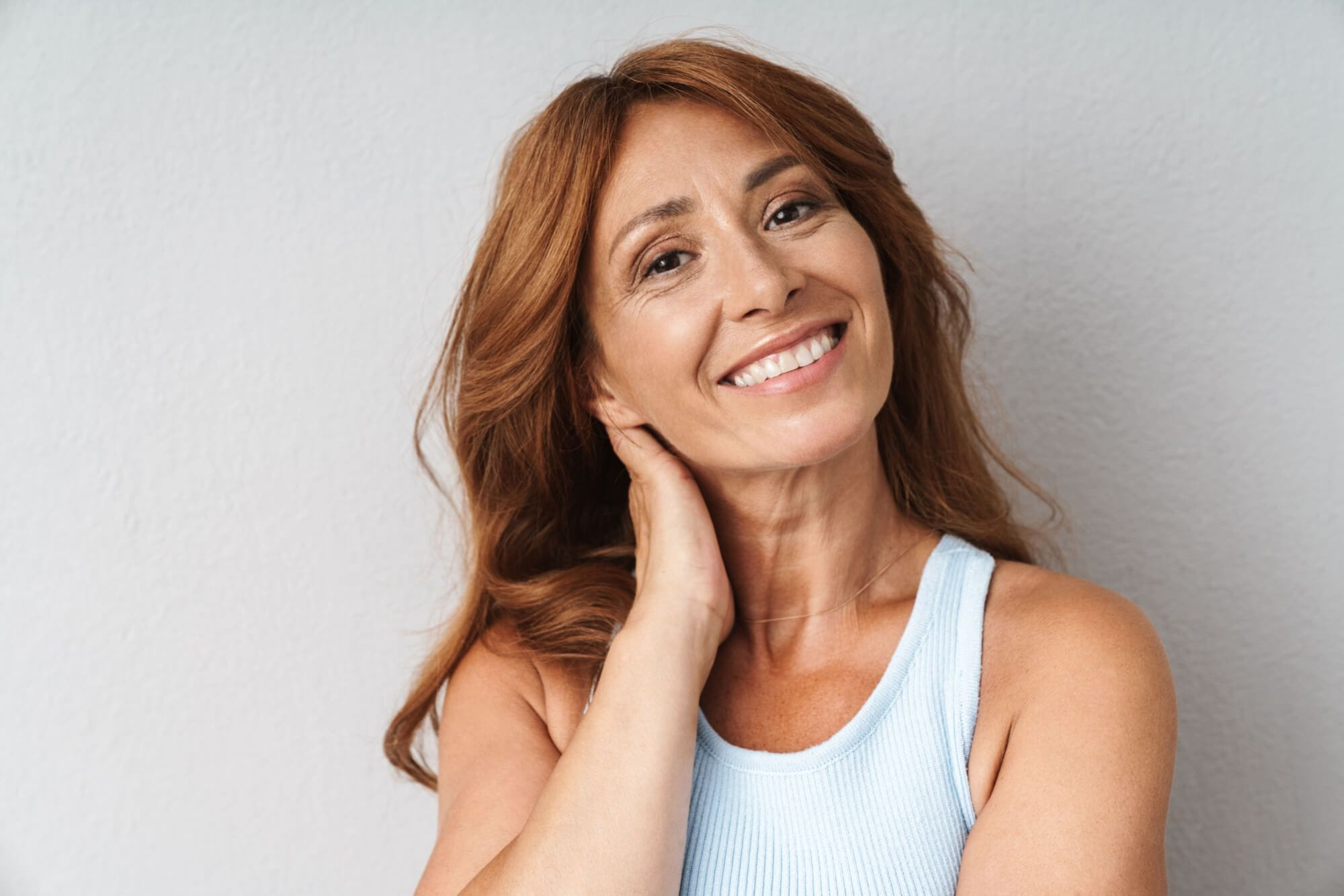
Want Healthier Hair? Follow These 9 Hair Maintenance Tips
Hair is a very important part of our lives, whether we realize it or not. It’s an outlet for us to express ourselves, and for many, it’s a part of our identity.
When you damage your hair or even start to lose it, it can be extremely tricky to get your hair back to the way it was. That’s why you need to do your best to get your hair to a healthy place and work to maintain your hair health for the future.
Maintaining healthy hair doesn’t have to be a hassle. With the right combination of proper washing, conditioning, and styling techniques, you will see a huge difference in the quality of your hair. Let’s talk about some tips to help you minimize damage and promote healthier, stronger hair.
1. Choose the right shampoo and conditioner
Find a shampoo and conditioner designed to address your hair concerns

Everyone has a different hair type. Some of us have oily hair while others have dry hair, and because of this, you need to find a shampoo and conditioner that works for your hair type—not against it. Your shampoo and conditioner essentially lay the foundation for healthier hair, and you may need to search around to find the best shampoo and conditioner for you.
The first step in the process of finding the right shampoo and conditioner is to understand your scalp type. Let’s talk about some different scalp types and how to best care for them.
- Oily hair - Your hair tends to look shiny after washing, and you have to wash it every couple of days to avoid your scalp looking greasy. Avoid hydrating and moisturizing shampoos as much as possible, and instead, opt for strengthening or balancing shampoos.
- Dry hair - Your scalp feels tight or even itchy after washing, but you typically do not have to wash your hair for around a week. Grab those moisturizing shampoos if you have dry hair!
- Combination hair - Your scalp is oily, but your ends are dry. Use a strengthening or balancing shampoo on your scalp, but use a moisturizing conditioner primarily on the ends of your hair.
Now, your scalp type isn’t the only factor you should consider when choosing the right shampoo and conditioner. Your hair type matters, too. Here are some common hair types and the shampoo and conditioner types that tend to work best:
- Straight hair - Smoothing shampoos and conditioners can help people with straight hair smooth out their natural hair without added heat.
- Curly hair - Moisturizing shampoos and conditioners specifically formulated for curly hair can help people reduce frizz while maintaining the bounce in their curls.
- Wavy hair - Balancing shampoos and conditioners for wavy hair typically aren’t too harsh and moisturize just enough.
- Thin hair - Volumizing shampoos and conditioners can help lift and strengthen your hair.
- Thick hair - Moisturizing shampoos and conditioners help add moisture and smoothness to thick hair.
Your simple run-of-the-mill shampoos and conditioners may not cut it for your specific hair type. There’s no one-size-fits-all when it comes to shampoo and conditioner, so you may need to test out different products until you find the formula that works best for you.
2. Wash and condition your hair properly
Get cleaner, stronger, and healthier hair by following proper washing techniques

Many people might be surprised to learn that the way they wash their hair can actually do more harm than good if done incorrectly. There is in fact a proper technique when washing your hair that can help you avoid a lot of common hair issues. To keep your hair healthy, follow these steps to properly wash and condition your hair.
- Wet your hair with warm water - Wetting your hair before you start shampooing helps loosen up the product and dirt buildup.
- Start shampooing your roots first - Gently massage the shampoo into your scalp using your fingertips. Focus on the roots first, since this is often the place that needs the most cleansing, and work your way down.
- Rinse and repeat (if needed) - If it’s been a while since you last washed your hair, you may need to shampoo your scalp more than once.
- Rinse thoroughly - Be sure to rinse all of the shampoo from your hair, especially on the nape of your neck and back of your head, before conditioning your hair.
- Condition the bottom half of your hair - It’s best to only condition the ends of your hair rather than all of your hair. Comb your fingers through the ends of your hair to ensure the product is evenly distributed.
- Rinse thoroughly with cold water - Rinsing your hair with cool or cold water helps seal in nutrients from your shampoo and conditioner.
With the proper washing technique, your hair will feel healthier and cleaner while being easier to maintain until your next wash.
3. Use heat sparingly
Heat-based styling tools can cause a lot of damage to your hair if you don’t take the proper precautions

Any time you use styling tools like flat irons, curling irons, and blow dryers, you’re putting your hair under excessive heat that damages your hair. While there’s no way to completely eliminate damage when using heat-based styling tools, you can take some preventative measures to protect your hair:
- Use a heat protectant - There are sprays and creams designed to provide a protective coating for your hair to lessen the damage caused by excessive heat.
- Use low heat - Use your styling tools on the lowest heat setting possible so that you can still get the look you want while causing less damage.
- Take a break from styling tools - If you use styling tools daily, take a break from the tools from time to time and opt for natural styling instead.
While the only way to totally prevent heat damage from happening in the first place is to avoid styling tools altogether, you can still take some extra measures to ensure that your hair is as protected as possible.
4. Minimize brushing wet hair
Avoid hair breakage by following the proper techniques when brushing wet hair

Your hair is most susceptible to damage when it's wet, and your hair strands are much more likely to snap when you brush wet hair. While it’s best to brush your hair when it’s dry, that’s not always possible. Here’s how to avoid damage when brushing wet hair.
- Towel dry your hair first - Use a towel to get as much moisture out of your hair as possible before you start brushing.
- Use a detangler - Especially if your hair is thick or more prone to breakage, a detangling product will help you more effortlessly brush through your hair without breaking your strands.
- Choose the right brush - Use a wide-toothed comb or a brush specifically designed for brushing and detangling wet hair.
- Brush properly - Start brushing the ends of your hair first and gradually work your way up to your scalp to avoid excessive pulling and breakage.
By following the proper techniques when brushing wet hair, you can prevent as much breakage as possible for much healthier hair.
5. Avoid tight hairstyles
Opt for looser hairstyles that don’t pull your hair instead

When you want your hair out of your face, your first instinct is likely to pull it back in a tight hairstyle. Tight hairstyles, like ponytails, braids, and buns, can really damage your hair. These styles pull on your hair, cause breakage, and traction alopecia. It’s ok to wear these hairstyles every once in a while, but you should not wear these hairstyles daily.
Instead of tight hairstyles, opt for a looser hairstyle. If you wear your hair up, try loosening up the hair around your scalp to reduce any pulling as much as possible. You may also want to find hair accessories that are gentle on your hair, like fabric-covered elastic bands or hair clips.
6. Protect your hair from the sun and other harsh elements
Protect your hair from harmful UV rays just like you would protect your skin

You know that you need to protect your skin from the sun, but did you know that UV rays and other environmental factors can damage your hair as well?
The top of your head is one of the places on your body that’s most susceptible to sun damage. While you may feel like your hair provides enough protection for your head, that’s simply not the case.
When spending time outdoors, you can protect your hair by wearing a hat, using hair sunscreen, or using a leave-in conditioner with UV protection. Avoid going outside with unprotected hair (and skin!) during times with a high UV index when possible.
If you spend any time in chlorinated pools, wet your hair with clean water before swimming and use a swim cap to protect your hair from chlorine damage. Wash your hair with clean water after you swim to get as much of the chlorine out of your hair as possible.
7. Eat a balanced diet and stay hydrated
A properly-balanced diet can drastically improve the health of your hair

Your diet plays a big role in just about everything in your life, including your hair. Healthy hair starts from within. A healthy diet can help you work towards shinier, stronger hair.
Your diet should be well-balanced with vitamins, minerals, and proteins. Fatty acids, namely those rich in omega-3, especially help with the health of your hair. Try introducing foods with fatty acids, like salmon, walnuts, and vegetables, to your diet if these are not already part of it.
You should also make sure you are eating foods that are rich in protein, like soy or chicken, daily. Additionally, drink plenty of water to keep your hair hydrated and promote overall scalp health.
8. Trim your hair regularly
Go to the salon every 6-8 weeks for a trim to keep your hair strong and healthy

While it may seem counterintuitive to cut your hair when you want it to grow, it’s actually quite the opposite. Regularly trimming your hair encourages hair growth and removes those pesky split ends that damage your hair. You should get your hair trimmed about every 6-8 weeks to properly promote healthy hair growth.
9. Be gentle with your hair
You only get one head of hair—do your best to treat it with care

No matter your hair or scalp type, you need to treat your hair with kindness. Be gentle with your hair as you take care of it.
Avoid rubbing your hair harshly with towels, use proper products and techniques to protect your hair, and minimize your exposure to chemical hair treatments as much as possible. The harsher you are with your hair, the more your hair will weaken and get damaged over time.
While there’s no way to totally eliminate damage to your hair, there are so many preventative measures you can take to make sure your hair is healthy and well-maintained. When you find the right combination of washing, conditioning, and styling techniques, you will start to work towards healthier, stronger hair.







